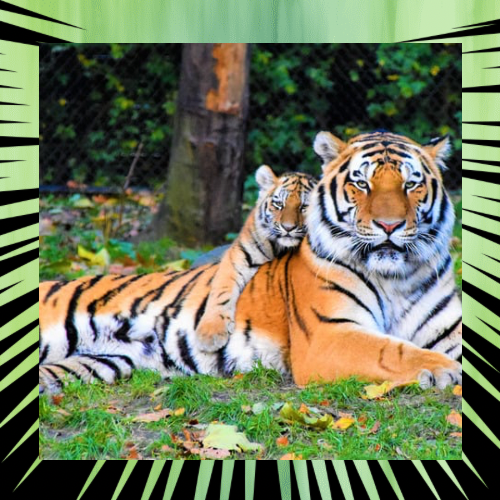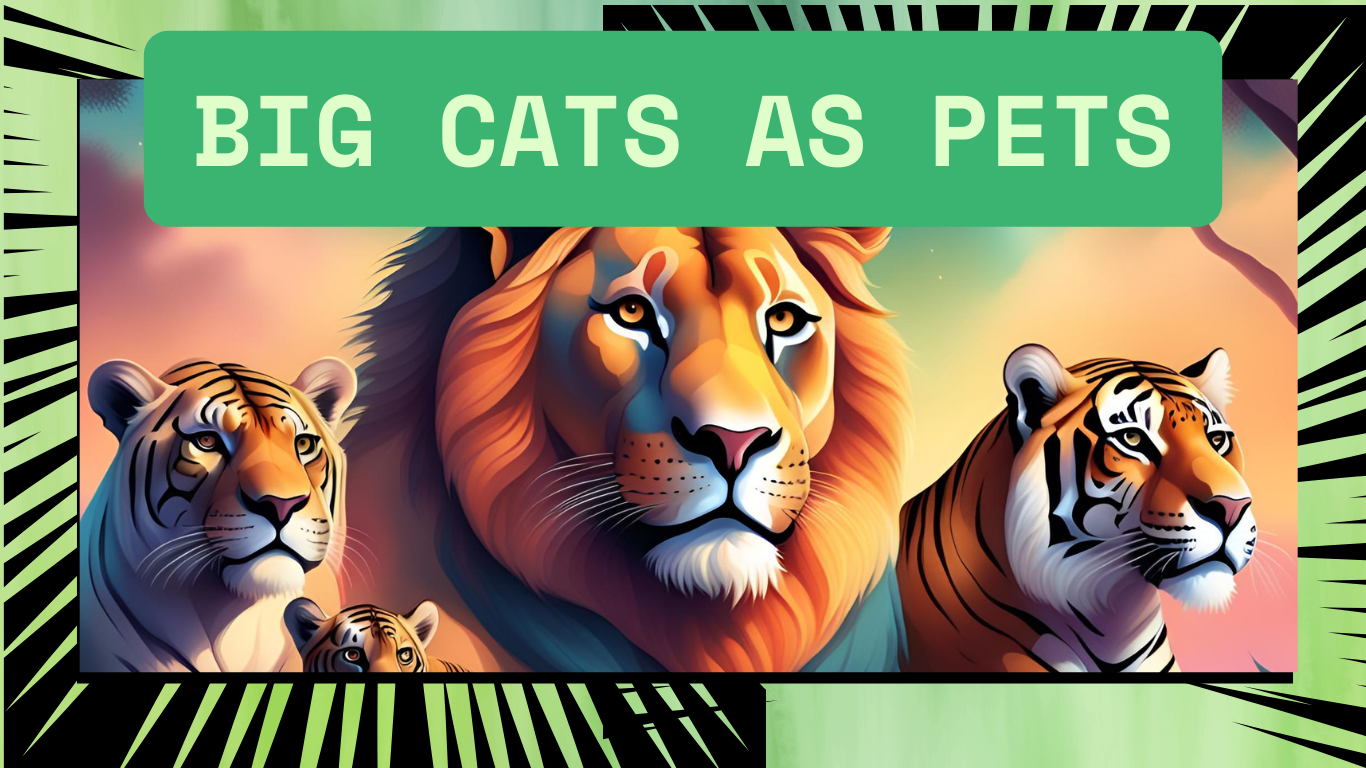Big cats like lions, tigers, leopards, and cheetahs have long fascinated humans with their majestic beauty and raw power. From ancient royalty keeping them as status symbols to modern-day social media influencers posing with “pet” tigers, the idea of owning a big cat is undeniably alluring. But is it really possible—or ethical—to keep these wild animals as pets? Let’s separate the myths from the harsh realities.


Myth 1: Big Cats Can Be Tamed Like House Cats
Reality: While big cats may exhibit affectionate behaviors, they are not domesticated. Domestication takes thousands of years of selective breeding to alter an animal’s instincts—something that hasn’t happened with lions, leopards, jaguars, cheetahs, pumas, or tigers.
Fun Fact: A tiger’s purr can reach up to 114 decibels—almost as loud as a chainsaw! But unlike your house cat’s gentle purring, this sound is a deep, powerful vibration used for communication.
Unique Trait: Tigers have a bite force of around 1,000 psi (pounds per square inch), strong enough to crush bone with ease. Even a “playful” nip could be deadly.
Myth 2: They’re Just Big, Fluffy Kittens
Reality: Cubs may seem cuddly, but they grow rapidly—and so do their instincts. By age one, a tiger cub can weigh over 200 lbs (90 kg) and has the strength to kill. Many owners who raise big cats from infancy are later attacked when the animal reaches maturity.
Fun Fact: Lions are the only big cats that live in social groups (prides), while tigers are solitary. This means a pet lion might crave constant interaction, while a tiger could become aggressive if forced into close contact.
Unique Trait: A lion’s roar can be heard up to 5 miles (8 km) away—not exactly ideal for suburban neighborhoods!


Myth 3: They Can Be Trained to Be Safe Around People
Reality: Training wild animals relies on dominance and fear, not mutual trust. Even trained big cats in circuses and private collections have mauled or killed their handlers. Unlike dogs, they don’t have an inherent desire to please humans.
Fun Fact: Cheetahs, though the “smallest” of big cats, can sprint at 60-70 mph (97-113 km/h). If they decide to bolt, good luck keeping up!
Unique Trait: Leopards are incredibly agile climbers and can drag prey twice their weight up a tree. Your living room furniture wouldn’t stand a chance.
Myth 4: It’s Legal (and Easy) to Own a Big Cat
Reality: Laws vary by country and state, but many places ban or heavily restrict private ownership. The U.S. has the Big Cat Public Safety Act, which prohibits keeping big cats as pets. Permits are usually only granted to accredited sanctuaries and zoos.
Fun Fact: In some U.S. states, it’s easier to buy a tiger than to adopt a rescue dog—but that doesn’t mean it’s ethical or safe.
Unique Trait: Tigers have striped skin, not just fur. Even if shaved, their patterns remain!


Myth 5: They’re Happy in Captivity
Reality: Big cats need vast territories, mental stimulation, and specialized diets. Confinement leads to stress, pacing, and self-harm. Many “pet” big cats end up in sanctuaries after their owners realize they can’t meet their needs.
Fun Fact: Lions sleep up to 20 hours a day in the wild—but in captivity, excessive lethargy can be a sign of depression.
Unique Trait: Snow leopards can leap up to 50 feet (15 meters) in a single bound. Your backyard won’t cut it.
The Ethical Alternative: Supporting Conservation
Instead of keeping big cats as pets, consider supporting wildlife sanctuaries, conservation programs, or ecotourism that protects them in their natural habitats. Organizations like Panthera and World Wildlife Fund (WWF) work to preserve these magnificent creatures where they belong—in the wild.


Final Thoughts
While the idea of cuddling a lion or walking a tiger on a leash might sound thrilling, the reality is far more dangerous—and unfair to the animal. Big cats are wild predators, not pets. By admiring them from a distance and supporting ethical wildlife initiatives, we can ensure their survival without compromising their well-being.
Would you ever consider owning a big cat? Or do you think they belong strictly in the wild? Let’s discuss! 🐾
References
- Big Cat Rescue. (n.d.). Why Big Cats Don’t Make Good Pets. https://bigcatrescue.org/conservation-news/big-cats-make-bad-pets
- National Geographic. (2021). Tiger Facts: What You Need to Know. https://www.nationalgeographic.com/animals/mammals/facts/bengal-tiger
- World Wildlife Fund. (2023). The Truth About Big Cat Ownership. https://www.worldwildlife.org/pages/big-cat-public-safety-act
- Panthera. (2022). Living with Big Cats: The Risks and Realities. https://panthera.org/living-big-cats






Thank you for writing this post. I like the subject too.
The articles you write help me a lot and I like the topic
I’m so in love with this. You did a great job!!